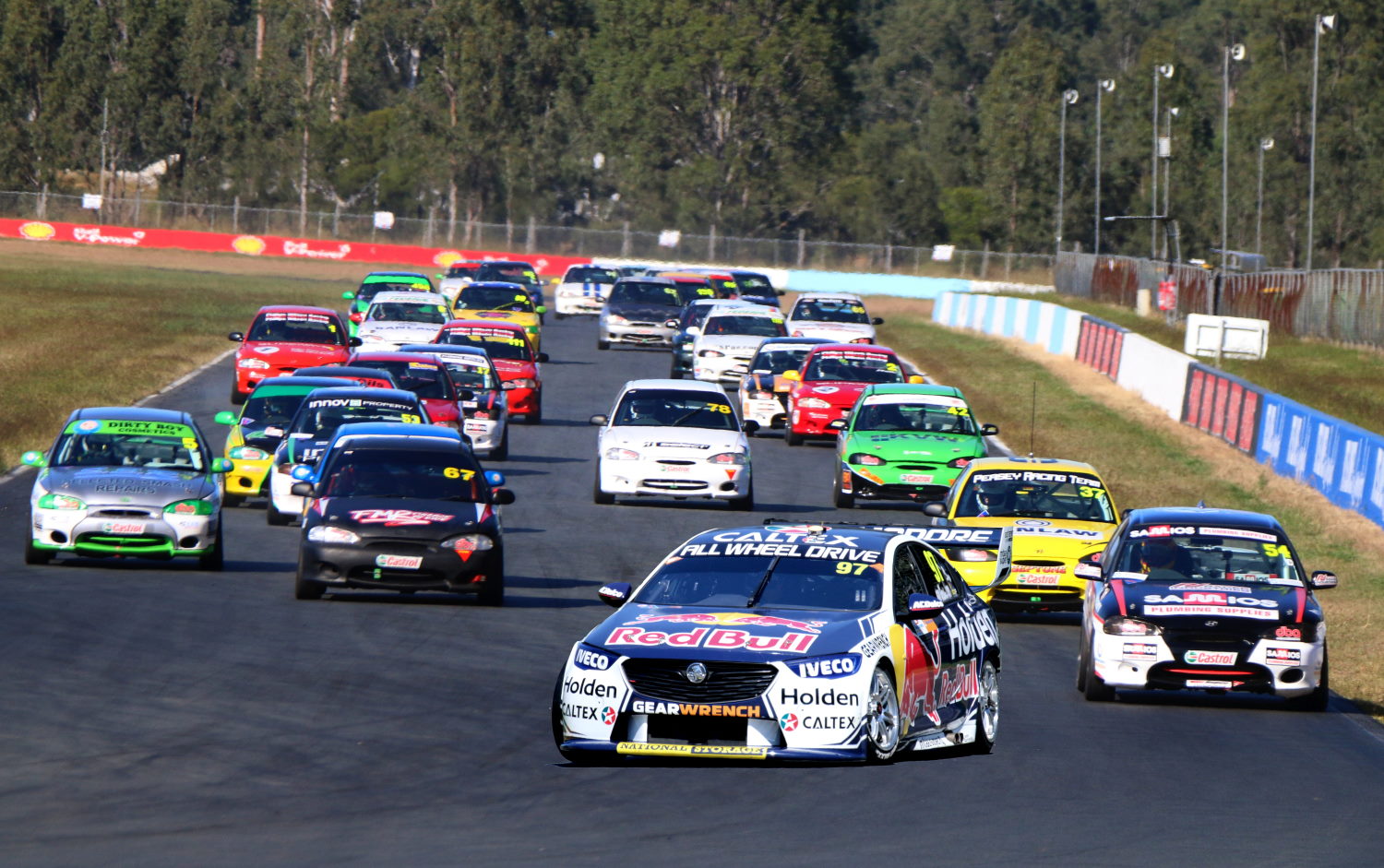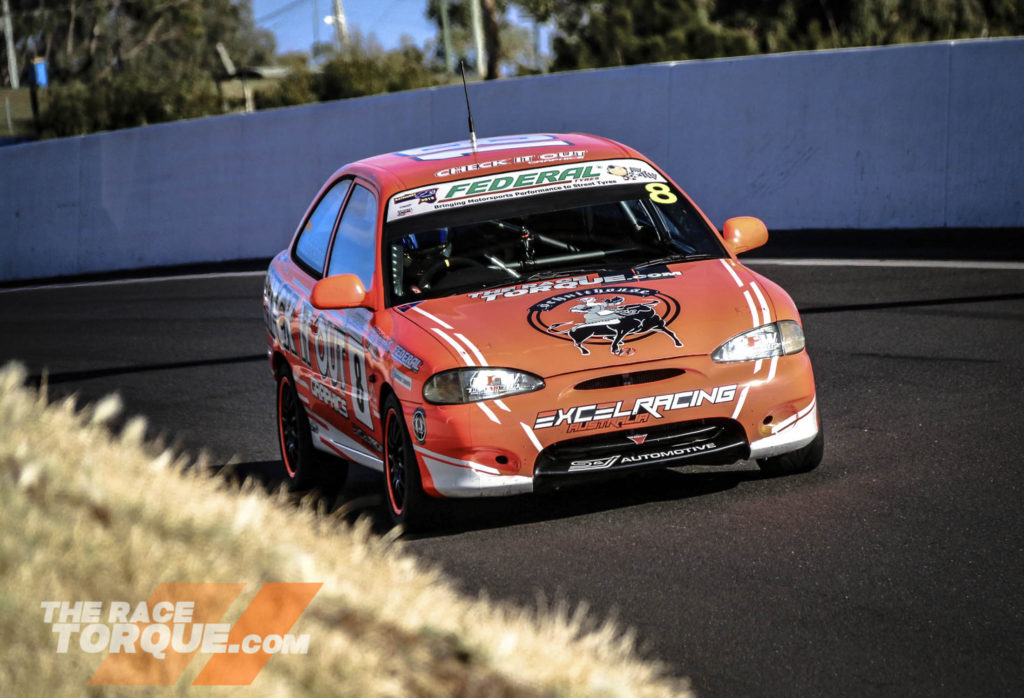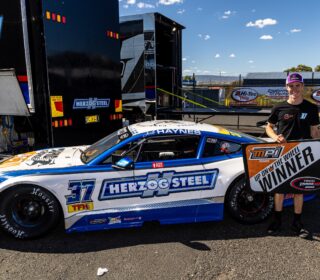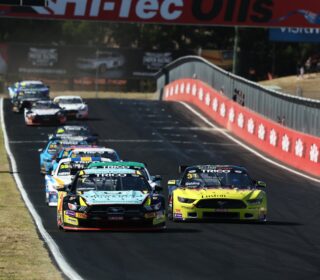COMMENT: SUPERCARS IN EXCELS, LET ‘EM RACE

OUR Friday feature “Supercars Teams Taking on Hyundai Excels: The Reality” stirred the pot, and got people in Hyundai racing land talking.
WORDS & IMAGES: Mark Walker
So with the prospect of outfits such as Triple 8 Race Engineering building up cars for the entry level form of circuit racing, what does it really mean for the category?
The Class is Whatever You Want it To Be
As we have already covered, this class can be whatever you want it to be – if you are a budget racer, there’s a place for you, likewise, if you have the cash to spend touring the country to race at big ticket events, it can be your home, too.
There are multiple factors that have attracted the likes of Anton de Pasquale, Will Brown, Tim Slade, Jordan Boys, Chelsea Angelo, Jaylyn Robotham and Broc Feeney, and they are the same reasons hundreds of others around the country have started in the class: it’s incredibly competitive, but at the same time, it’s cheap.
Feeney is an excellent point in case, he and his father Paul built their current Hyundai racer over the off-season, which has hit the track twice this year at Sydney Motorsport Park.
First time out in wet conditions, Feeney scored pole ahead of a 28 car field by a whopping 1.7sec, before he and co-driver Anton de Pasquale romped away to a 20sec win.
Second time out, he scorched to pole with a bigger margin ahead of 38 cars, although he was pushed all the way to the chequered flags by long time Excel regulars (and TCR drivers) Michael Clemente and Ben Bargwanna.
So what’s his secret advantage?
Broc’s car features a six-point welded in cage from Scott’s Rods in Ipswich, which retails for $780, or $2,080 if you would prefer it installed by them, with the company also supplying the specialist racing exhaust system for $535.
The hot word on the street is that the car runs a top of the line engine, which comes in at around the $7,500 mark, while the car utilises the Supashock suspension package option, which ranges between $1818 and $2488 new, depending if acquire the set with tops and setup data included.
Add in the purchase price of the car (which tends to be one of the cheapest puzzle pieces), and the other components like brakes and lines, loom, reconditioned gearbox, paint, wheels and tyres, race seat, steering wheel, pedals, window net, plus other bits and pieces to complete the race car, it would be safe to assume the build to come in at a bit over $20,000.
It’s all easily accessible componentry and know-how, and combined, it makes for a race winning car.
Oh, and it is driven by Broc Feeney, last year’s Super3 champion, this year’s Super2 driver for Tickford, and James Courtney’s co-driver for the Bathurst 1000.
Maybe, just throwing this out there, in Hyundai Excel racing, driving ability plays a part in deciding the ultimate finishing order.
Driving Ability
Long before I ever started lurking around the Supercars paddock, I spent every available weekend for 12 years trackside at club level events, be it a race meeting, hillclimb or sprint, witnessing at close quarters the relative progression of drivers over time.
Fast forward to having logged time at the other end of town, I’ve figured out a few things that make Supercar competitors tick.
For starters, professional drivers are constantly looking to improve themselves. It’s their job.
Every off season, renowned driver coach Rob Wilson collects tickets off multiple Supercars drivers who line up for an annual tune up in the UK.
They spend days blasting around in a rental car working on their technique and mindset.
Closer to home, the Norwell Motorplex is constantly giving steerers improvement tips, and there are other outlets available to those willing to learn.
Another indelible memory I have from the Supercars pit lane is the differing relationships between driver and engineer.
I’ll never forget one top-line pilot who used to return to the pits, complain to his engineer, who would then go away and try to tune the problems out of the car.
Fast forward to their next engineer, the driver would complain about an identical problem, but the engineer would fire back with some helpful suggestions to tune up the driver, rather than the car.
This change of tact ultimately paved the way to much improved results. Hrmmm…
So my question to state level drivers everywhere is: what have you done to improve yourself? What guidance have you had, what have you invested in yourself, rather than your car?
The definition of stupidity is doing the same thing over and over again and expecting different results – you could keep chucking money at the car, but by keeping the same old driving traits, improvement will ultimately be hard to achieve.
Some people are naturally born with the ability to figure it out, while for the rest of us, it’s hard work. But there are people out there that will help, all without costing an arm and a leg, or a trip to England.
Outside of coaching, for those on a shoestring, tangible results can be gained through simple data logging phone apps, which if you put some thought into on a test day, can be very beneficial.
Products such as Track Addict or Race Chrono are priced between $13.99 and $17.99, with their output useful if the driver can either lap consistently, slightly tweaking their driving style throughout a run, or by comparing to a baseline lap set by another driver.
This Isn’t an Arms Race
The thing is, with the rules and regulations in place, dumping an endless pile of money at the cars won’t give you a competitive advantage.
The reality is, that Supercars teams won’t be coming in with their A-grade drivers or huge dollar rocketships to blast everyone into the weeds.
Scratching beneath the surface, you will find that many professional teams have been on the go-slow lately, with no racing, and no builds of current generation cars underway – there are fabrication shops left twiddling their thumbs, quite often on Job Keeper subsidised wages.
Why not tap out some cheap and cheerful race cars for customers?
While people have been reported to offer race engines for $15,000 a pop, I would strongly urge you to shop around; there are front running engines available from reputable people in the sport for half that amount, with options available down the line for those on a lower budget.
Triple 8 isn’t going to design a roll cage made from unobtainium that makes everything else obsolete, nor will they develop a suspension package that places their car on rails. The rules forbid that.
They will simply be cars that are in the mix, just like everyone else out there, from the Broc Feeneys of the class right the way through, with their results ultimately determined by the filler between the wheel and the seat.
To those who have been put out by the prospect of Roland Dane coming to race – do you not back yourself as a better driver than him?
I remember back to my karting days – if I ever got to share the track with some big dogs, I thought it was Christmas, and if I ever accidentally beat them – even better!
That is some brag-worthy stuff, and short of a Supercars budget, Excel racing is where it can happen.

The Strength of Excels
The fear is that costs will spiral out of control, and sure, the cars aren’t the $2,500 specials they once were, but if you are on a modest budget, you can still compete and have fun.
Having a look around the classifieds, there are plenty of sub-$10,000 cars available that will get you on your way, and the beauty of the class is that it is bolt-on motorsport; you can start out with a cheap car, and upgrade it as funding permits.
The above quoted prices for the car build can be much cheaper – there is a ready second hand market on components such as suspension, and you can get an engine built to your budget.
From what I have seen first-hand, the front runners are not necessarily pouring a constant stream of money into their cars, but rather forever tinkering, working on their preparation, fine tuning the one-percenters and going testing with a plan. They are non-stop thinking about improvements.
The other thing that I have noticed in the past five years that I have been somewhat involved with the class is that it is an open book – not many competitors will feed you BS, there is a lot of help out there if you simply ask.
While the Motorsport Australia rule book isn’t perfect, it is a work in progress, with the powers-that-be well aware of the consequences of letting costs get out of control.
Hyundai Excel racing remains one of the cheapest possible forms of motorsport, but with its growth there have been opportunities presented to race on programs such as the Supercars undercard and at the Shannons Nationals, with racing at Bathurst another highlight.
While taking on all of these big events, and indeed having $20,000 to build a front running car from scratch isn’t achievable by all, the category is still going to remain a place where everyone can enjoy door-to-door racing, no matter your position on the budget versus talent plot.
There are no other classes with this nationwide appeal and big fields competing in this price bracket.
The fear that Supercars teams are going to destroy the class I believe are misguided – embrace the competition, improve yourself, and show them how it’s done with what you have available.
Everyone loves a good underdog story.







